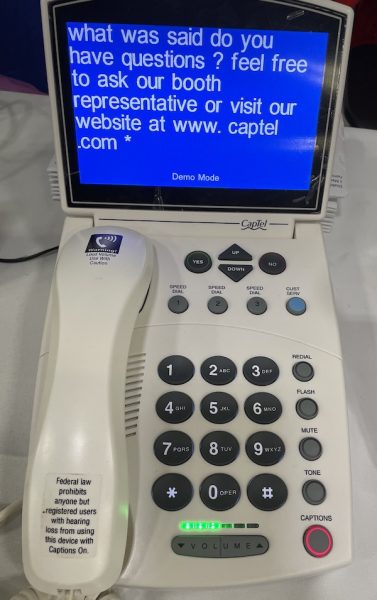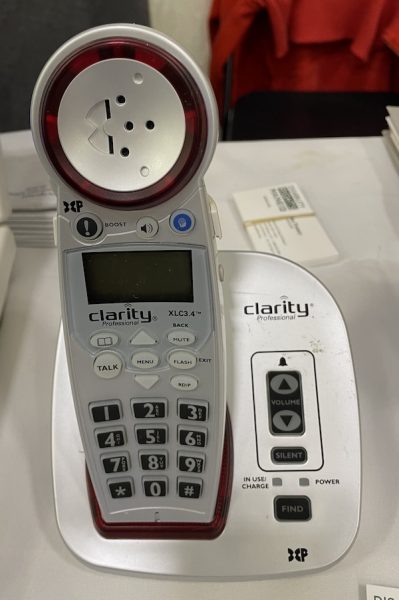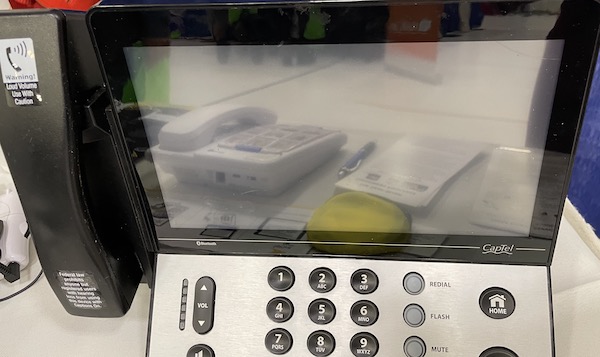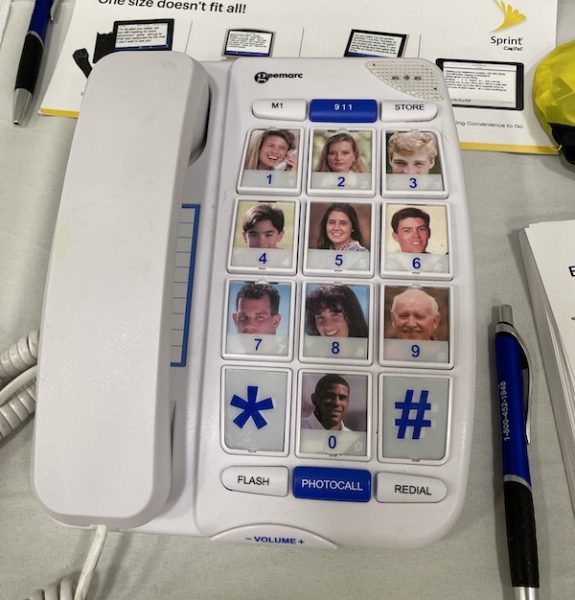I learned some things about hearing loss recently that I thought were important to pass along. One is that it is an invisible disability. Debra Bare-Rogers, who is an advocate for deaf services at Disability Rights Maine (DRM), says people need to talk about it more.
People with hearing loss need to say, “I didn’t understand you, I need captions, I need you to speak more slowly.” We need to be able to talk about hearing loss out loud. If you have any type of hearing loss it’s a struggle. Especially with masks, which make it more difficult to understand speech even without hearing loss. My message is don’t hide your hearing loss. Let people know what you need to best communicate with others.
Debra Bare-Rogers, Advocate, Deaf Services, Disability Rights Maine

Debra knows what she’s talking about when it comes to hearing loss and the fact that it’s an invisible disability. Look carefully at this picture and you will see that she wears hearing aids. You probably wouldn’t realize it at first or even second glance. I didn’t when I met her.
She lost much of her hearing about nine years ago.
They don’t know what caused it. It just dropped all of a sudden. I probably had some hearing loss growing up, but in graduate school I went from understanding the professor to not being able to decipher what they were saying in the front of the room. I have hearing loss in both ears.
I met Debra at a Successful Aging Expo sponsored by Maine Senior Guide. She was there representing Disability Rights Maine and telling people about equipment and programs that are available for people with hearing loss.
Depending on your income, age, and disability, you may be eligible for assistive technology through DRM’s Telecommunications Equipment Program (TEP). For instance, a person who is over 65 may qualify for one free hearing aid. There are also phones that are specially adapted for someone with hearing loss and other disabilities. Debra had an array on display and explained what they offer.

If you have trouble understanding what someone is saying on the phone, you might opt for a phone with captions. This one has a more traditional look to it but can be used with an Internet connection as well as a standard phone line.

If you have poor vision and/or do not want to read captions, you may want to consider an amplified, big button, or talkback phone instead.

This phone has a touch screen display like a tablet and can be connected to the Internet and to Bluetooth. You can dial a number, check your captioned voicemails, and adjust the quality and tone of the sound. The beauty of the Bluetooth connection is that sound goes directly into your hearing aids.
Bluetooth is awesome. If I want to connect to this phone, to a cell phone, a laptop, or a computer I can connect via Bluetooth. I wear a special neck loop, click a button on it and a button on my hearing aids and I’m connected to the device and hearing it right directly into my hearing aids. It’s wonderful.

With this phone, you can boost the sound and the big buttons are a big help if you also have trouble seeing the numbers.

For someone who has a cognitive disability, dementia, or memory loss, this phone allows you to substitute images for numbers.
It could be pictures or maybe colors. It could be a symbol, such as for the doctor’s office. Anything that makes it easy to identify.
I’m only showing you a few options — there are others and also, Maine Relay can help you make and receive calls, using captions. Whether you think you will qualify for the Disability Rights Maine programs or not, if you have hearing loss, I suggest getting in touch with them. You can discuss your needs with Debra or another advocate and find out what options are available and if you qualify. Here’s the link to Debra’s contact information: Disability Rights Maine. She also provides monthly virtual presentations about Maine Relay and the Telecommunications Equipment Program (TEP).
Another organization that may be helpful is OEI, which provides no-cost CapTel caption phones. The program is available for people with certified hearing loss under Title IV of the Americans with Disabilities Act (ADA). Visit their website for more information.
Something else that Debra explained to me about hearing loss is that for some people, it’s just about making sounds a little bit louder. For others, like her, specific sounds are more difficult. Everyone is different.
I have difficulty with lower pitch sounds and different tones. In a conversation, I might be doing just fine, but on a phone, I have difficulty because the person may be talking and also doing something else that makes sounds. So, there’s all these different other sounds that are getting in. Being able to adjust the volume and the tone can make it easier to understand.
What I took away from my conversation with Debra besides that she is knowledgeable, helpful, and easy to talk to is that there are options for people with hearing loss that I wasn’t aware of. As we get older, we are more likely to lose some hearing. It can be frustrating for both the person with hearing loss and the people around them. Also, research shows that if you don’t try to deal with it, you can be slammed with other problems from social isolation to dementia. Read this information from Johns Hopkins if you’d like more information on that subject.
Debra says we need to talk about hearing loss, so I’ve started the conversation. I hope it helps. By the way, Disability Rights Maine doesn’t just assist people who have hearing loss. It offers a wide variety of advocacy and assistance services for people with all kinds of disabilities.

Leave A Comment